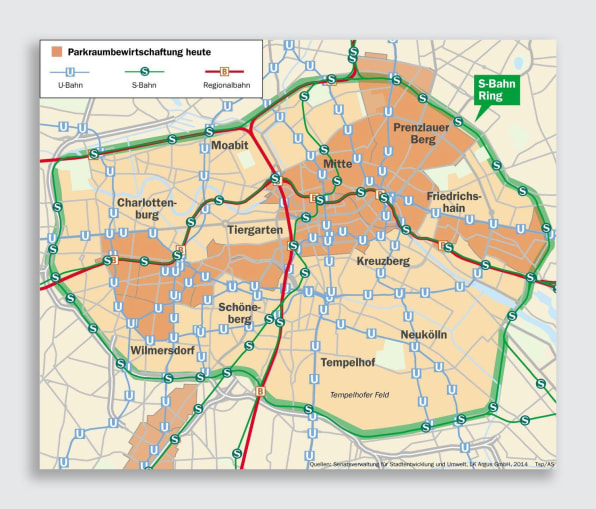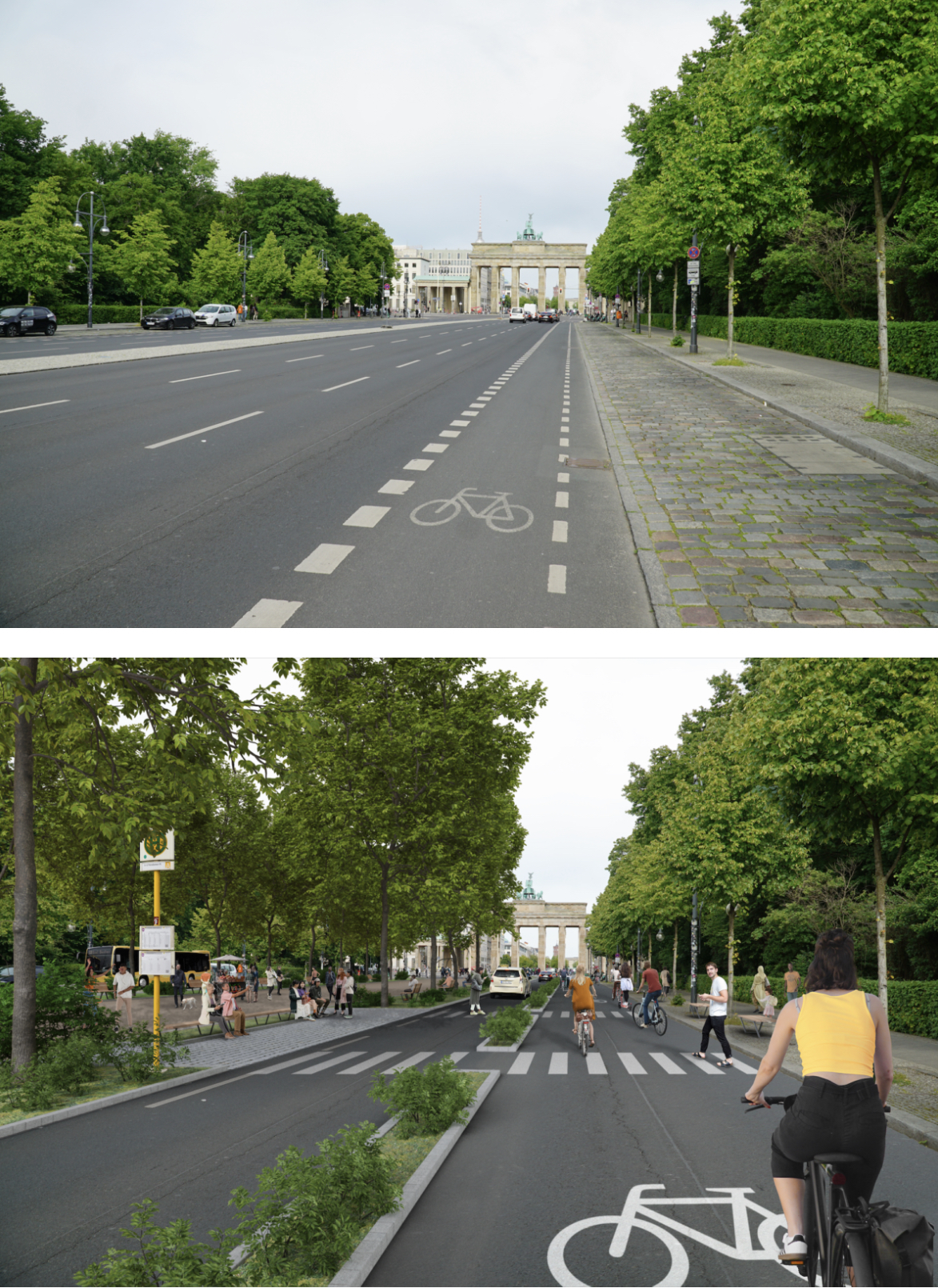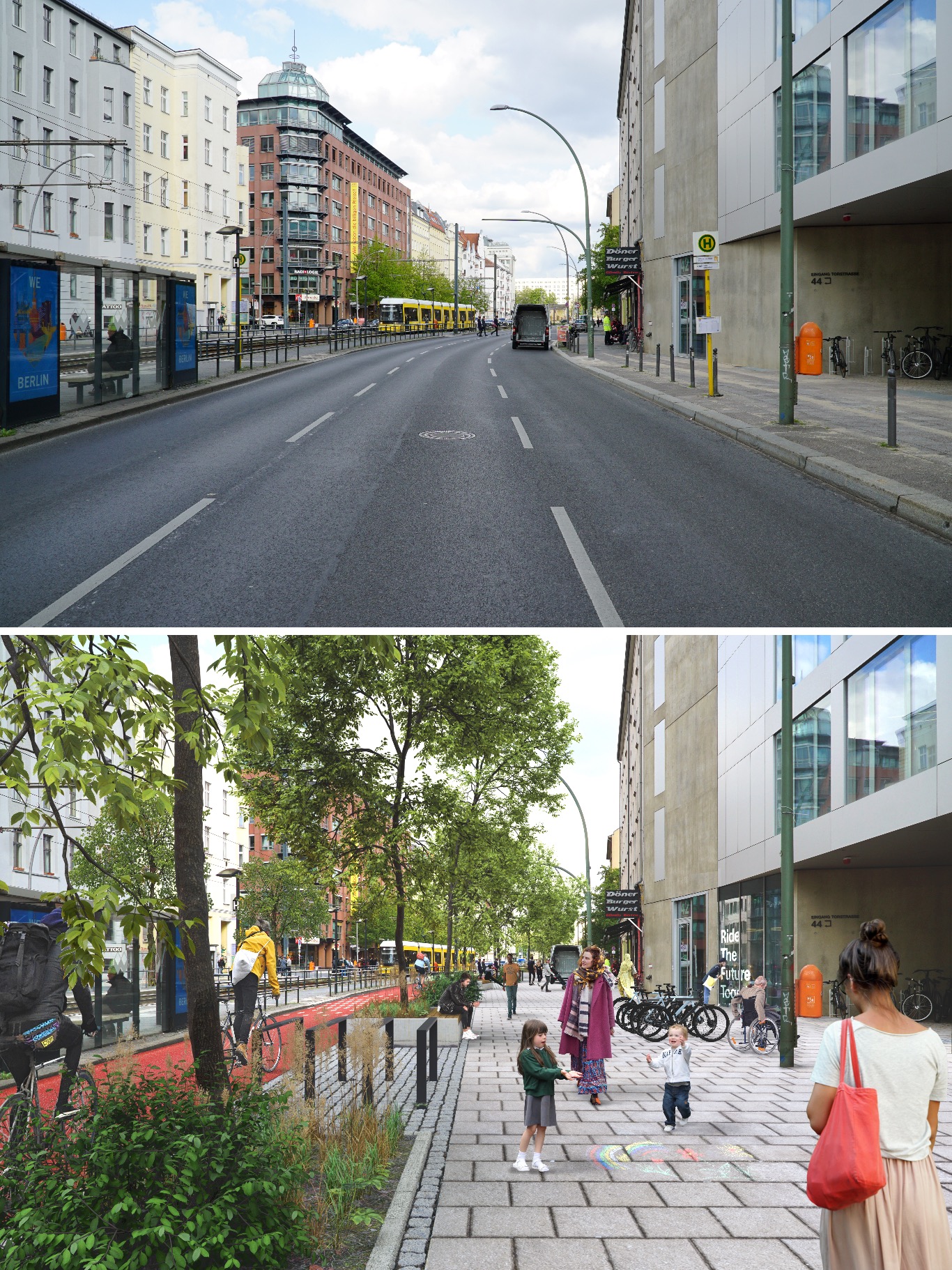
The German capital is considering a citizen-driven plan that would create a car-free zone larger than Manhattan Island.
BERLIN IS PLANNING A CAR-FREE ZONE LARGER THAN MANHATTAN
Berlin’s regional parliament is considering creating a car-free zone in the German capital in response to a concerted push from a local advocacy group Volksentscheid Berlin Autofrei, or People’s Decision for Auto-Free Berlin. The car ban would apply to the space ringed by the S-Bahn train line, which circles the city center, an area larger than Manhattan Island, or London’s Zones 1 & 2.

Berlin Looks to Create Car-Free Zone Larger Than Manhattan
Volksentscheid Berlin Autofrei, or People’s Decision for Auto-Free Berlin, the group behind the measure, was started in 2019 by a group of friends who worked with pro bono lawyers to draft a new law that would restrict vehicle use to trucks, taxis, emergency vehicles, and limited car-sharing programs.
The group then collected more than the required 50,000 signatures in support of the measure, forcing the Berlin Senate to take up the issue next month, Fast Company reported.
If the Senate rejects the measure, Autofrei will seek to collect 175,000 signatures, enough to force the Senate to consider the matter again. Should the Senate reject it once more, it will go to a referendum in 2023.
In Berlin, ample bike lanes, regular trains, and a robust network of public busses make getting around without a car more manageable than in many other major cities. Cars account for just 17% of trips within the S-Bahn ring, according to a 2014 report commissioned by the Berlin Senate.
Nevertheless, in the city center, cars still crowd roads and parking spaces, trends highlighted by campaigners in renderings showing how Berlin roads look today and how they might appear without cars.
Source: e360.yale.edu

Other European cities car reduction plans include:
Last year, Paris unveiled plans to install up to 650km of bicycle lanes—including a number of pop-up “corona cycleways”. Before the Coronavirus crisis, Paris Mayor Anne Hidalgo had promised that every street in the city would become cycle-friendly by 2024, but fears of gridlock caused by increased car traffic once the lockdown is eased are allowing officials to accelerate Hidalgo’s existing “Plan Vélo”transport changes. More on this story.
Meanwhile, Milan announced plans to turn 35 km of streets over to cyclists and pedestrians to reduce car use after lockdown. In accordance with the new scheme, the city declared that 35km of streets would be transformed over the summer with a rapid, experimental citywide expansion of cycling and walking space. More on this story.

Could this work in the USA?
Cities in the U.S. often face steeper obstacles to enacting car-free zones, especially because many American cities don’t have expansive transit networks. Some activists have instead worked through zoning laws to allow denser development in areas that surround already dense downtowns, making car ownership less necessary.
The activist group 1000 Friends of Oregon had a big role in lobbying for the state to enact a law in 2019 to ban single-family housing zones, which would allow denser development in areas surrounding denser city centres in coming years. California followed suit in September.
While most American cities aren’t quite ready for full car bans, activists can prepare the way by doing things such as organising block-long neighbourhood festivals that shut down streets temporarily, says 1000 Friends’ deputy director, Mary Kyle McCurdy.
Such events can better demonstrate what small car-free areas might look like in the future, and the disruptions brought about by the pandemic have provided some leeway for experimentation.
Source: GreenBiz

9 GOOD REASONS TO SPEND MORE TIME OUTDOORS
Nature offers one of the most reliable boosts to your mental and physical well-being. Here are just 9 of many potential health benefits of spending more time outdoors.